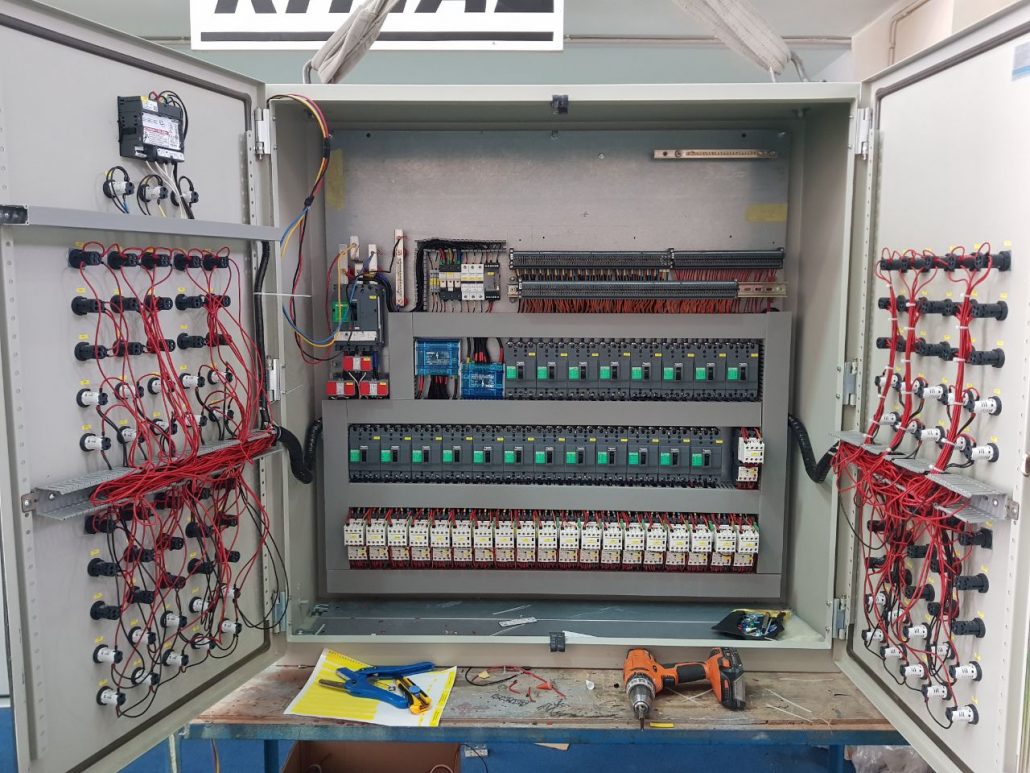Motor control centers are an essential part of industrial power distribution systems and play a vital role in industrial automation. They are used to distribute and control electrical power to various motors installed at different machines and equipment in industries and facilities. With the advancement in technology, low voltage motor control centers have become more intelligent, efficient and customizable as per specific industrial requirements. This article provides an overview of low voltage motor control centers, their components, applications and benefits of using them in industries.
Components of a Low Voltage Motor Control Center
A low voltage motor control center consists of various components that work together to safely distribute and control electrical power to the connected motors. Some of the key components include:
– Bus bars – Made of copper or aluminum, bus bars are the main conductors that carry power from the power source to individual motor control units.
– Motor control units – Each unit contains circuit breakers, motor starters, and overload relays to protect and control a single motor.
– Circuit breakers – Used as overcurrent protection devices to isolate faults. Trip automatically during overload or short circuit.
– Motor starters – Devices like contactors, relays or Variable Frequency Drives (VFDs) used to start, stop and control the operation of motors automatically or manually.
– Overload relays – Protect motors from overheating due to excessive currents during overload conditions.
– Control switches – Buttons, push buttons or selector switches to start, stop or change the operation modes of connected motors.
– Monitoring devices – Ammeters, voltmeters and status indicating lights to monitor the health and operation of motors.
– Enclosure – Sheet metal enclosure protects all electrical components and buses from harsh environmental conditions.
Applications in Industries
Some common applications and uses of low voltage motor control centers in different industries include:
– Manufacturing plants – To operate production machinery like conveyor belts, machines, assembly lines, CNC machines, etc.
– Cement plants – Used to control cement manufacturing equipment like kilns, crushers, cement mills and other processing machinery.
– Water and waste-water treatment plants – Controls pumps, blowers, mixers and other equipment used in water filtration and treatment process.
– HVAC systems – Manages air handling units, chillers, cooling towers, fans and pumps used in heating, ventilation and air conditioning applications.
– Oil and gas facilities – Controls pumps, compressors, coolers, extractors and other process equipment used in petroleum refining and gas production plants.
– Mining – Manages mining extraction machinery, conveyor systems, crushers, grinders and other heavy-duty equipment used underground and open pit mines.
Benefits of Using Low Voltage Motor Control Centers
There are many advantages of using Low Voltage Motor Control Centers in industries which improve operations, safety, reliability and maintenance. Some key benefits include:
– Centralized control – Ability to remotely monitor and control multiple motors from a single location enhances process efficiency.
– Plug and play design – Modular construction allows easy additions, changes or replacement without impacting existing infrastructure.
– Safety – Integral protection devices prevent equipment damage and personnel hazards during faults or malfunctions.
– Reliability – Rigid testing and built-in redundancies ensure continued operations even during component failures.
– Energy efficiency – Options like VFDs help optimize motor speed for maximum energy savings and minimum operating costs.
– Space savings – Compact footprint compared to distributing components individually saves valuable floor space.
– Flexibility – Customized configuration as per evolving process requirements facilitate production enhancements.
– Ease of maintenance – Front access design simplifies troubleshooting, repairs and component replacement activities.
– Documentation – Integral wiring diagrams streamline identification of electrical connections during maintenance work.
– Cost effectiveness – Long term ownership offers overall lower life-cycle costs compared to individual components.
*Note:
1. Source: Coherent Market Insights, Public sources, Desk research
2. We have leveraged AI tools to mine information and compile it




